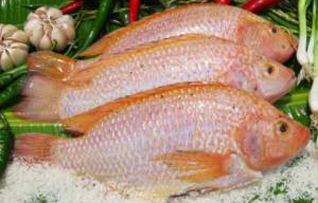 ia producing region will meet with global retailers in Boston next week hoping to secure higher prices or long-term supply contracts to reward more environmentally-responsible tilapia cultivation.
ia producing region will meet with global retailers in Boston next week hoping to secure higher prices or long-term supply contracts to reward more environmentally-responsible tilapia cultivation.The Hainan Tilapia Sustainability Alliance will meet with major discount retailers in Germany as well as a leading U.S. retailer with global reach, according to Han Han, the Hainan-based country manager for the Sustainable Fisheries Partnership (SFP). She declined to name them until deals are inked.
The meetings are part of an effort by the Hainan alliance to engage retailers — having to date focused on producers, processors and feed suppliers in the local tilapia value chain. “We have to build confidence on the buyer side and therefore give premium prices or long-term purchase orders to reward farmers pursuing best practice,” explained Han. Aside from retail, the SFP-assisted Hainan Tilapia Sustainability Alliance has also built ties to foodservice, with resort operator Disney and hotel operator Starwood (which operates a Sheraton hotel in Hainan) both keen on tilapia from the alliance for its China properties.
Securing big name clients would be good news for the firms involved in the alliance, which includes three of China’s top tilapia processors, including top-placed Xiang Tai, Sky Blue Ocean and the feed-processing conglomerate, Tongwei. Also on board is King Win Aquaculture, which serves as a middleman, supplying feed and purchasing tilapia from farmers for processors, as a provider of technical advice to tilapia farmers the firm has been useful in distributing best practice know-how, said Han. Partners in the alliance are keen to improve the quality and reliability of tilapia supply by sharing information and training between farmers.
Faced with weaker prices in 2013 a third of Hainan tilapia farmers had left tilapia for shrimp and grouper cultivation. But some of those farmers are coming back as prices rise, said Han. Factory prices for tilapia in Hainan have risen to an average CNY 5.40 per 500 grams (g) compared to CNY 4.6 in 2013.
The prospect of increased domestic sales has become more alluring for tilapia producers and processors. It’s worth noting that less than half of China’s tilapia output is exported: a growing percentage is being sold at home, demand is particularly strong in the provinces of Guangxi and Yunnan, said Han. Wholesale market prices of CNY 7 per 500g in Guangxi meanwhile compares favorably with the CNY 5.4 per 500g currently paid by processors in Hainan. Prices in major urban areas, like Shanghai, are much higher, explained Han.
Prosperity meanwhile continues to curb land availability for tilapia farming in Hainan, with some tilapia farmers however forced to quit their ponds due to a provincial government keenness to promote tourism. “Some of the ponds were located along reservoirs but now government wants to preserve reservoirs. Several 100-hectare tilapia farms have closed.”
With prices rebounding and domestic demand a growing option, tilapia cultivators across China appear keener to improve quality through knowledge exchange and producer bodies: Han said tilapia farmers in key zones like Guangxi and Guangdong have looked eagerly to lessons learnt in her Hainan project. Individual farmers have become enthusiastic users of the Weibo microblogging platform to share knowledge.
Han sees hopeful signs of change to more sustainable production across the Chinese tilapia value chain. Processors in Guangdong have begun to offer farmers a guaranteed minimum price to secure long-term supplies of tilapia.
Hainan firms travelling to Boston have been working with SFP for the past six months to develop an industry Code of Good Practice (CoGP) as part of an effort to improve the image of tilapia from Hainan.





